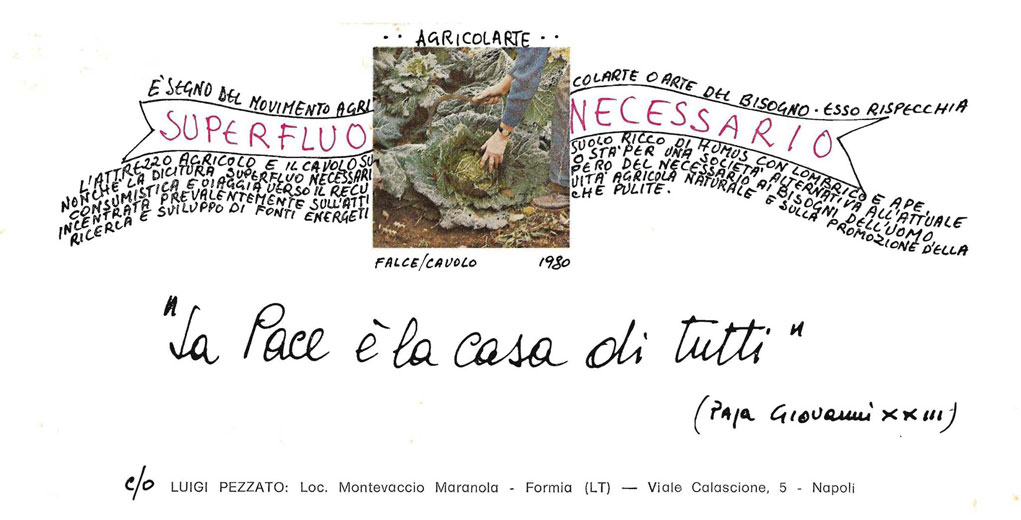2016
Itinerant installation + video projection + performance
33 wooden letters, landscape, cheese, vegetables and organic agricultural products, water from Fonte Acqua Viva spring, Aurunci Mountains.
Variable dimensions
In 2016, when invited to take part in the Seminaria Festival, I brought in Marandola (LT), as a further step of the Culture Tour, the line “Ciò che è vivo…” (“What is alive). In those lands, between 1980 and 1992, Agricolarte, also called Arte del Bisogno (The art of Need) took place: a farmers’ cooperative, but also an aesthetic and political operation, conceived by artist Luigi Pezzato together with some inhabitants of Maranola.
With Agricolarte Pezzato meant to promote the work of the farmers and shepherds as manufacturers of health and fertile soil, of landscape and beauty, and as examples of an alternative economy which is attentive to man’s vital needs, and opposing to the consumer capitalist system.
My intervention was shaped in a cellar in the village, mounting a table with the products of local farmers and breeders (heritage of Agricolarte) together with a video-sound installation placed upstream in the background while I was serving water from the Acqua Viva spring which has had a vital meaning to Pezzato and for the birth of Agricolarte. This act represented the opportunity to tell its story.
Along the path to the cellar, the word “need” included in the line was set up in a dying garden, as a
demand for a life need linking Pezzato’s work and mine, and suggesting the necessity to reconsider our
concept of “need”.
> This stage was part of Seminaria Festival, curated by Marianna Fazzi and Isabella Indolfi, Maranola (LT), 2016.
Thanks to: Vincenzo De Meo (Agricolarte), Michele Minchella (Agricolarte – Az. Ag. cheese production), Giovanni Simione -called Mastrandrea (Agricolarte – organic vegetable production and processed), Nino Forte (Maranola resident, for the use of the winery).
Images by Emanuela Ascari, Sguardoingiro (from video), Margherita Zanardi, and from Luigi Pezzato’s archive edited by Aldo Maiorano.








